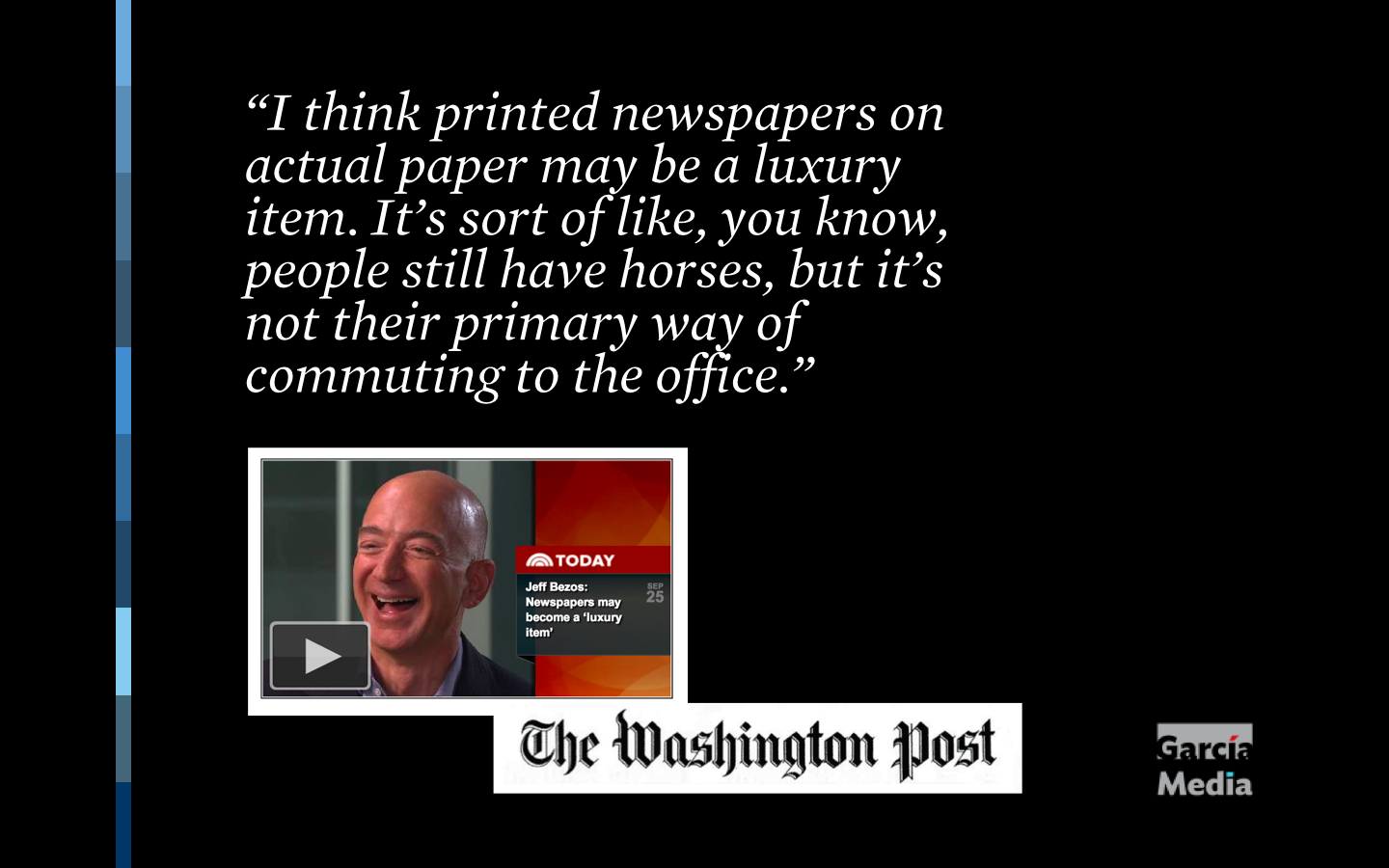
The topic is timely and the question comes up often, especially at the end of a presentation and/or seminar: How long do you think we will have print editions of our newspapers?
“There will always be print,” I tell them, and I notice the smiles light up the room. But, I add, it may not be print as we know it. Perhaps there will not be Monday thru Friday print editions, as we know how busy people are and how much they depend on mobile platforms to keep them informed. A robust print edition of the newspaper, for sure.
This week, USA Today's editor-in-chief, David Callaway , mentioned that USA Today could stop publishing a daily print newspaper as soon as in the next “five or six years.”
He was quick to point out, however, a print product of some kind will likely continue for “the rest our careers.' This prompt the essential question about Mr. Callaway's age and how long he plans to stay active as a journalist.
But his response sounds familiar.
Jeff Bezos, new owner of The Washington Post since 2013, said something similar about the Post:
“Someday,” Bezos said, “The Washington Post may not have a print edition. It could be decades.”
Then he added one of my favorite quotes, and one that I use often in my presentations:
“I think printed newspapers on actual paper may be a luxury item. It’s sort of like, you know, people still have horses, but it’s not their primary way of commuting to the office.”
Survival of print: predicting four scenarios
Nobody has the answer to this question. But I am on the side of those who always see a print product in some form, although I suspect that it will be quite different from the way print newspapers appear and are distributed today.
In my view:
1. We will begin to see much better packages offered to subscribers for access to a brand, including some form of print platform, if the subscriber chooses to take it. I believe that a good, lean back weekend product may be quite attractive to all, including millennials who will seek the more meditative mode of reading and consuming information that print affords.
2. Print and advertising have been married for years. I can see where the once or twice a week print product may be where advertising inserts, coupons and other “hold it in your hand and clip it” advertising messages will be displayed. Indeed, the weekend print product would be almost a 50-50 proposition of lean back material (more book and magazine than newspaper), combined with attractive advertising offerings.
3. The weekend print product should be printed in a small format. Broadsheets have had their day and should be moved to the attic when the print product is rethought.
4. Let print be print. The print product will not be constant reminders of the digital offerings of a brand. Readers are savvy, they are going to be moving efficiently and smartly through the media quintet. We don't need to annoy subscribers when they are reading us in print with reminders that there is a video someplace else. We know, says the reader, and we will tap into that if we wish.
Washington Politicians and Print
According to a survey published by the National Journal’s Communication Council under the title Washington in the Information Age, one fifth, 69 percent of Capitol Hill staffers said they read print publications because they were readily available; 59 percent said they chose ink-and-paper editions because of their credibility.